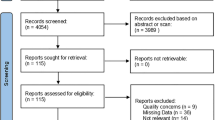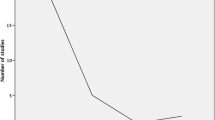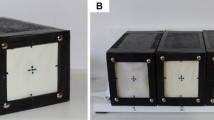Abstract
Sustained interest and an increase of possible indications endorse the role of robot-assisted surgery of the head and neck region. However, broad clinical application is impeded by substantial extra cost, time exposure and a supposed deficit of haptic and tactile feedback. The role of haptic feedback has barely been examined in this context, and literature provides only limited objective validation. This point of criticism applies to all commercially available systems. We created an experimental setup to evaluate, quantify and compare the performance of surgical systems. The daVinci system (Intuitive Surgical), the Flex system (Medrobotics) and standard rigid instruments (23 cm laryngoscopic grasper, Karl Storz) were compared with the human hand by head and neck surgeons (n = 15), performing a variety of surgical tasks. Specific samples with different rigidity were sorted with all devices, and the resulting orders were analyzed by permutation analysis, indicating differences in precision and accuracy of haptic and tactile feedback. The human hand was superior in all trials, acting as reference modality. The flexible instruments of the Flex system performed better than the electro-mechanically decoupled instruments of the daVinci system for the majority of measures recorded, suggesting a benefit in terms of haptic and tactile feedback in this context. While not all aspects of haptic and tactile feedback were accessible, this first objective comparison endorses the inferiority of robot-assisted surgery in terms of haptic and tactile feedback, compared to the human sense or standard surgical tools. Furthermore, the immediate force transmission of the Flex system seems to be superior to the electro-mechanical transformation of the daVinci system, indicating an advantage in terms of haptic and tactile feedback in immediate comparison. This study is providing a basis for further experiments and the development of robotic surgery towards an implementation in clinical routine.





Similar content being viewed by others
References
Friedrich DT, Scheithauer MO, Greve J, Hoffmann TK, Schuler PJ (2016) Recent advances in robot-assisted head and neck surgery. Int J Med Robot Comput Assist Surg MRCAS doi:10.1002/rcs.1744
Dombree M, Crott R, Lawson G, Janne P, Castiaux A, Krug B (2014) Cost comparison of open approach, transoral laser microsurgery and transoral robotic surgery for partial and total laryngectomies. Eur Arch Otorhinolaryngol 271(10):2825–2834. doi:10.1007/s00405-014-3056-9
Enayati N, De Momi E, Ferrigno G (2016) Haptics in robot-assisted surgery: challenges and benefits. IEEE Rev Biomed Eng 9:49–65. doi:10.1109/RBME.2016.2538080
Genden EM, Desai S, Sung CK (2009) Transoral robotic surgery for the management of head and neck cancer: a preliminary experience. Head Neck 31(3):283–289. doi:10.1002/hed.20972
Schuler PJ, Duvvuri U, Friedrich DT, Rotter N, Scheithauer MO, Hoffmann TK (2015) First use of a computer-assisted operator-controlled flexible endoscope for transoral surgery. The Laryngoscope 125(3):645–648. doi:10.1002/lary.24957
Friedrich DT, Scheithauer MO, Greve J, Duvvuri U, Sommer F, Hoffmann TK, Schuler PJ (2015) Potential advantages of a single-port, operator-controlled flexible endoscope system for transoral surgery of the larynx. Ann Otol Rhinol Laryngol. doi:10.1177/0003489415575548
Schuler PJ, Hoffmann TK, Veit JA, Rotter N, Friedrich DT, Greve J, Scheithauer MO (2016) Hybrid procedure for total laryngectomy with a flexible robot-assisted surgical system. Int J Med Robot Comput Assist Surg MRCAS doi:10.1002/rcs.1749
O’Malley BW Jr, Weinstein GS, Hockstein NG (2006) Transoral robotic surgery (TORS): glottic microsurgery in a canine model. J Voice 20(2):263–268. doi:10.1016/j.jvoice.2005.10.004
Lederman SJ, Klatzky RL (1993) Extracting object properties through haptic exploration. Acta Psychol (Amst) 84(1):29–40
Reiley CE, Akinbiyi T, Burschka D, Chang DC, Okamura AM, Yuh DD (2008) Effects of visual force feedback on robot-assisted surgical task performance. J Thorac Cardiovasc Surg 135(1):196–202. doi:10.1016/j.jtcvs.2007.08.043
Hoffmann TK, Schuler PJ, Bankfalvi A, Greve J, Heusgen L, Lang S, Mattheis S (2014) Comparative analysis of resection tools suited for transoral robot-assisted surgery. Eur Arch Otorhinolaryngol 271(5):1207–1213. doi:10.1007/s00405-013-2615-9
Liu WP, Azizian M, Sorger J, Taylor RH, Reilly BK, Cleary K, Preciado D (2014) Cadaveric feasibility study of da Vinci Si-assisted cochlear implant with augmented visual navigation for otologic surgery. JAMA Otolaryngol Head Neck Surg 140(3):208–214. doi:10.1001/jamaoto.2013.6443
Okamura AM (2009) Haptic feedback in robot-assisted minimally invasive surgery. Curr Opin Urol 19(1):102–107. doi:10.1097/MOU.0b013e32831a478c
Schuler PJ, Hoffmann TK, Duvvuri U, Rotter N, Greve J, Scheithauer MO (2016) Demonstration of nasopharyngeal surgery with a single port operator-controlled flexible endoscope system. Head Neck 38(3):370–374. doi:10.1002/hed.23910
Tavakoli M, Patel RV, Moallem M (2005) Haptic interaction in robot-assisted endoscopic surgery: a sensorized end-effector. Int J Med Robot Comput Assist Surg MRCAS 1(2):53–63. doi:10.1002/rcs.16
Liu C, Moreira P, Zemiti N, Poignet P (2011) 3D force control for robotic-assisted beating heart surgery based on viscoelastic tissue model. Conf Proc Ann Int Conf IEEE Eng Med Biol Soc IEEE Eng Med Biol Soc Conf 2011:7054–7058. doi:10.1109/IEMBS.2011.6091783
Byrn JC, Schluender S, Divino CM, Conrad J, Gurland B, Shlasko E, Szold A (2007) Three-dimensional imaging improves surgical performance for both novice and experienced operators using the da Vinci Robot System. Am J Surg 193(4):519–522. doi:10.1016/j.amjsurg.2006.06.042
Author information
Authors and Affiliations
Contributions
DTF, PJS and JG designed the study, executed the experiments and wrote the manuscript. LD, SH and FS designed and manufactured samples and ensured technical realization. JH edited data and figures, BM developed and performed the statistical analysis. TKH executed experiments, edited and corrected the manuscript.
Corresponding author
Ethics declarations
Conflict of interest
DTF, TKH, PJS and JG have published on the Flex system (Medrobotics) before. These took part as investigators in the clinical study evaluating the Flex system without receiving financial compensation. A fee was payed to Medrobotics per case. DTF, PJS and TKH have received travel expenses for cadaver labs with the Flex system. For these authors, there is no additional financial commitment or dependent relationship. LD, BM, SH, FS and JH declare, that they have no conflict of interest. Permission was obtained from the respective manufacturers for publication of all figures.
Rights and permissions
About this article
Cite this article
Friedrich, D.T., Dürselen, L., Mayer, B. et al. Features of haptic and tactile feedback in TORS-a comparison of available surgical systems. J Robotic Surg 12, 103–108 (2018). https://doi.org/10.1007/s11701-017-0702-4
Received:
Accepted:
Published:
Issue Date:
DOI: https://doi.org/10.1007/s11701-017-0702-4




